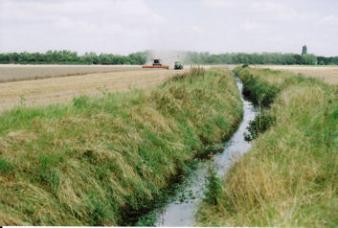Thomas Chaplen was Lord of the Manor of Trumpington in the early 1600s, when the ‘New River’ was made through Trumpington.


In the Medieval period, there were five manors within the parish of Trumpington. From the late 14th century, the foremost of these manors was held by the De La Pole family. In 1574, John Chaplen, a Trumpington yeoman, purchased the De La Poles manor. When John Chaplyn died in 1602, the manor descended to his son Thomas Chaplyn. (The Chaplen name was also written as Chaplin, Chaplyn and Chapley.) In the early 1600s, the university and town were planning to improve the stream flowing through Trumpington from Nine Wells to Cambridge, as the basis for a water supply into the town. This was intended to provide fresh water and flush out the King’s Ditch which surrounded the town. In 1610, Thomas Chaplen, as chief lord of the manor, granted a wayleave to make the ‘New River’ through Trumpington, to supply water along Hobson’s Brook to Hobson’s Conduit (both names adopted some years after construction). The ‘New River’ goes from south to north across the heart of what later became known as Clay Farm. In 1615, Thomas Chaplyn sold the manor to his nephew John Baron. In 1785, the manor was sold to Jeremy Pemberton and combined with the main Pemberton estate.
Chaplin and Thomas Hobson are commemorated on a monument at the Nine Wells Local Nature Reserve, erected in 1861.
One of the streets in the Clay Farm development is named Chaplen Street .
In March 2019, one of the rooms in the Clay Farm Centre was named the Chaplen Room.